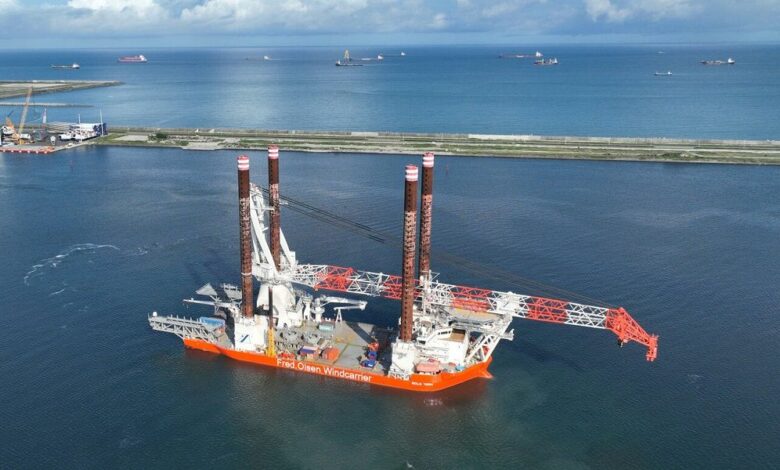Wind installation vessel emissions reporting under the microscope

Class society DNV and partners have launched a new joint industry project with the aim to establish a monitoring and reporting framework for assessing greenhouse gas (GHG) emissions in the offshore wind installation sector.
Offshore wind is seen as one of the vital parts of the energy transition, with DNV’s Energy Transition Outlook projecting that by 2050 it will supply some 15% of the world’s total electricity generation and grow to 50% of ocean capex. However, the class society said that this growth projection will require a massive ramp-up in the development and deployment of offshore wind installation vessels.
“As the global energy transition accelerates, transparent emissions reporting is becoming an essential part of the expectations that all players in the shipping industry have to meet,” said Arnstein Eknes, DNV segment director for special ships.
However, Eknes added that most current metrics track transportation work, such as emissions per ton mile. “This leaves us with a gap for vessels in the offshore wind installation segment, where the types of work performed is much more complex. Our aim is to create a shared set of standards for tracking and reporting these emissions, one that covers these varied work modes, propulsion modes, and operational activities,” he said.
The project is expected to provide a framework that will enable contractors and operators to document vessel performance and more easily set reduction targets, according to Henning Carlsen, smart class manager – offshore classification, at DNV.
“Charters and financial institutions will then be able to compare vessels on these GHG metrics and document the efficiencies in their projects. We hope that this can then feed into regulations that are better tailored to the needs of the segment and boost the industry’s drive towards a greener future,” he noted.
The project will run through 2023 to establish a set of emissions metrics that can provide a foundation to objectively measure GHG emissions. It is expected to result in parameters and measurements of “work performed” that are appropriate for the individual ship types and common modes of operation, including DP operation, standby, transit and lifting.
In addition, the project partners said they will work to develop a set of reference values that can be used as a benchmark for operations in the industry for both internal and external stakeholders – comparable to existing standards (AER, or annual efficiency ratio; CII, or carbon intensity indicator; and EEOI – energy efficiency operational index) for other ship segments.
The project will focus primarily on foundation installation vessels, wind turbine installation vessels, and cable laying vessels. The partners comprise energy companies, ScottishPower Renewables, RWE, Vattenfall, Orsted, and installation companies, Jan De Nul Group, DEME, Ziton, Cadeler, Van Oord, Fred. Olsen Windcarrier, and DNV.
